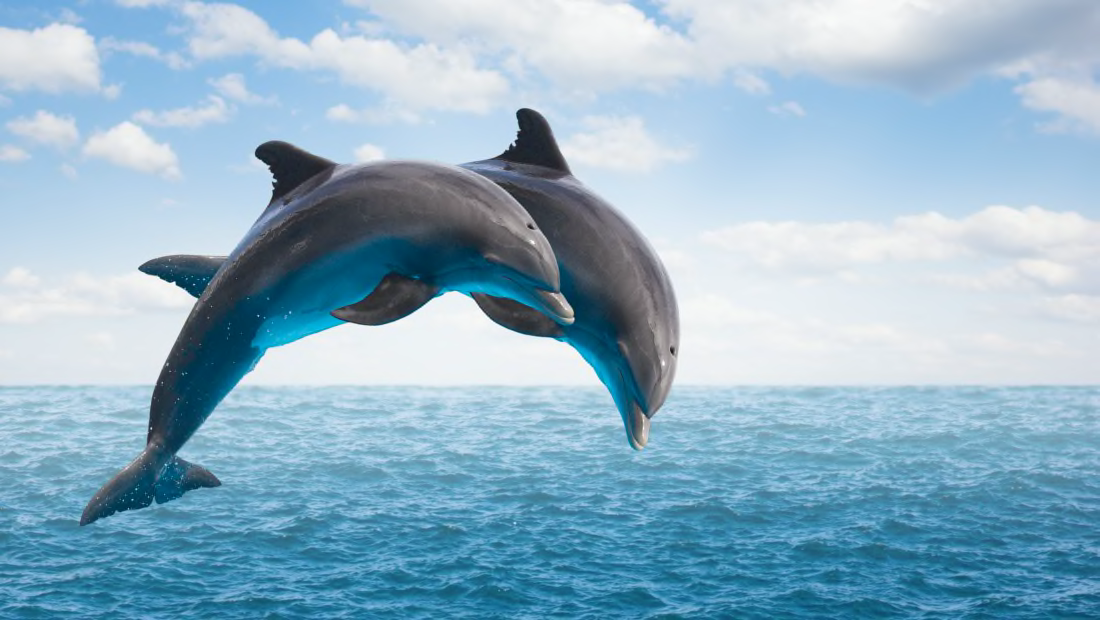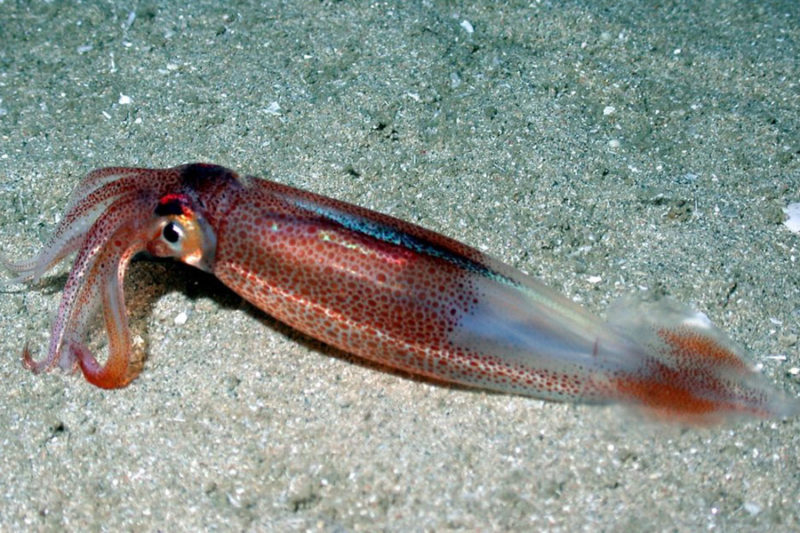
Dolphins are small-toothed Cetaceans, a group of marine mammals that evolved from land mammals. They have developed numerous adaptations that make them well suited for life in water including a streamlined body, flippers, blowholes and a layer of blubber for insulation. Dolphins have curved beaks which means they appear to have permanent smiles. Dolphins evolved from land mammals whose legs were underneath their bodies. As a result, dolphins tails move up and down as they swim, whereas a fish’s tail moves from side to side. Dolphins, like all toothed whales, lack olfactory lobes and nerves. Because dolphins do not possess these anatomical features, they most likely have a poorly developed sense of smell.
The snout of some oceanic dolphins is long and slender due to their elongated, prominent jaw bones. Within the dolphins' elongated jaw bone sits numerous conical teeth (some species have as many as 130 teeth in each jaw). Species that have prominent beaks include, for example, Common Dolphin, Bottlenose Dolphin, Atlantic Humpbacked Dolphin, Tucuxi, Long-Snouted Spinner Dolphin, and numerous others. The forelimbs of a dolphin are anatomically equivalent to the forelimbs of other mammals (for example, they are analogous to arms in humans). But the bones within the forelimbs of dolphins have been shortened and made more rigid by supporting connective tissue. Pectoral flippers enable dolphins to steer and modulate their speed. The dorsal fin of a dolphin (located on the back of the dolphin) acts as a keel when the animal swims, giving the animal directional control and stability within the water. But not all dolphins have a dorsal fin.For example, the Northern Rightwhale Dolphins and the Southern Rightwhale Dolphins lack dorsal fins. Dolphins do not have prominent external ear openings. Their ear openings are small slits (located behind their eyes) which do not connect to the middle ear. Instead, scientists suggest that sound is conducted to the inner and middle ear by fat-lobes located within the lower jaw and by various bones within the skull. Description


Dolphins live in all of the world’s seas and oceans; many inhabit coastal areas or areas with shallower water. Dolphins live in all of the world’s seas and oceans; many inhabit coastal areas or areas with shallower water. While most dolphins prefer warmer tropical or temperate waters one species, the orca (sometimes called killer whale) lives in both the Arctic Ocean and the Antarctic Southern Ocean. Five dolphin species prefer fresh to salt water; these species inhabit rivers in South America and South Asia.
Habitat and Distribution
Currently there are 42 dolphin species and 7 porpoise species which are grouped into six families: the oceanic dolphin family is by far the largest with 38 members; the porpoise family has seven members; and there are four river dolphin families, each containing just one species. Dolphins are members of the order Cetacea, Suborder Odontoceti, Families Delphinidae, Iniidae, and Lipotidae. Within those families, there are 21 genera, 44 species, and several subspecies.
` SpeciesThe Baiji has suffered dramatic population declines over recent decades due to pollution and heavy industrial use of the Yangtze River. In 2006, a scientific expedition set out to locate any remaining Baiji but failed to find a single individual in the Yangtze. The species was declared functionally extinct.
Conservation Status

Humans have long been fascinated with dolphins, but the relationship between humans and dolphins has been complex. Dolphins are the subject of stories, myths, and legends as well as great works of art. Because of their great intelligence, dolphins have been used for military exercises and therapeutic support. They are also often kept in captivity and trained to perform; in most cases, this practice is now considered to be cruel. While there have been very few documented encounters of aggression between dolphins and humans, they are large wild animals who are capable of doing us harm. They can turn aggressive when harassed or when they feel their group is at risk. ... But it's clear that dolphins appear to be as curious about us as we are of them.
Dolphins and Humans link 1